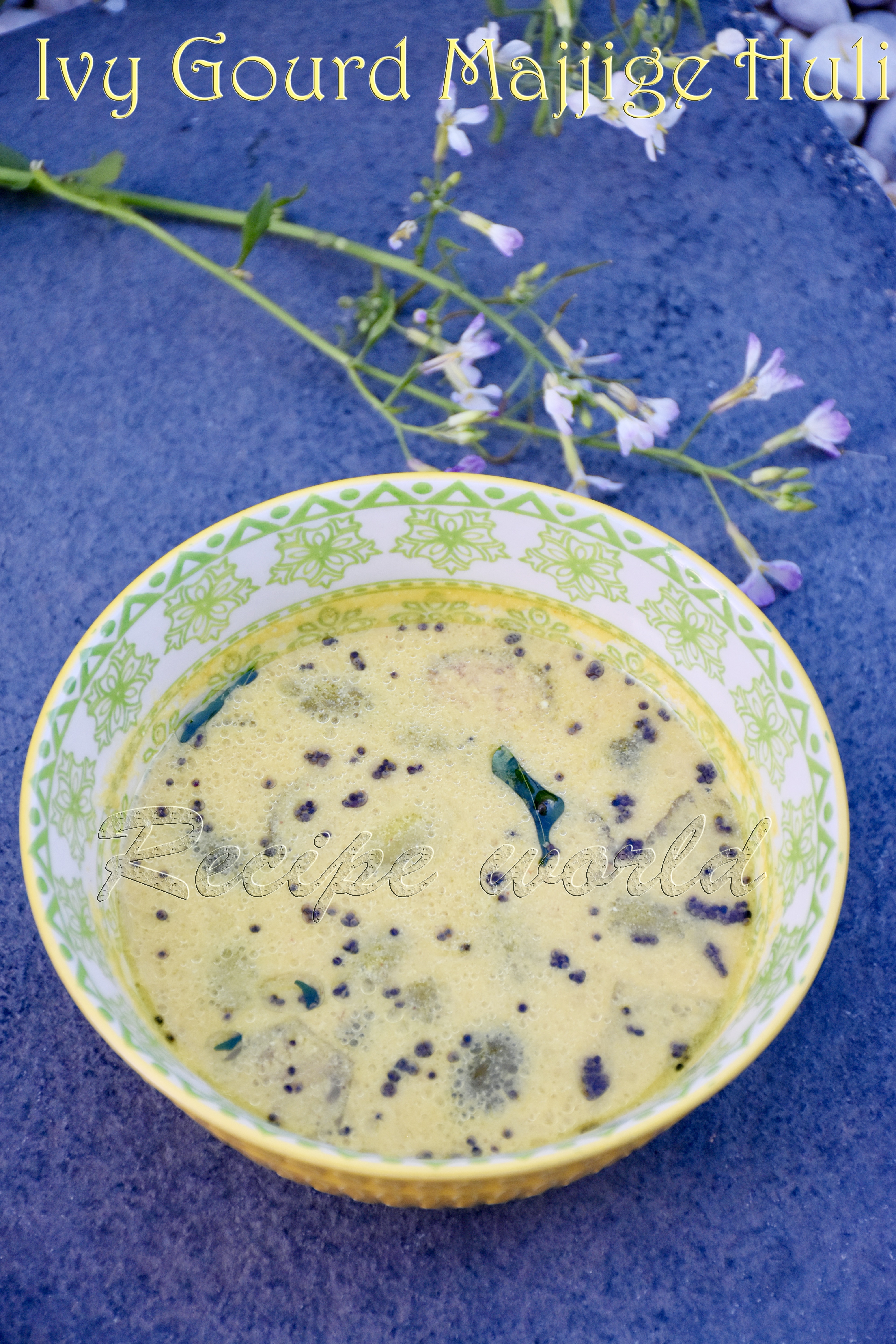ಕನ್ನಡದಲ್ಲಿ ಓದಲು ಇಲ್ಲಿ ಕ್ಲಿಕ್ ಮಾಡಿ
'Tambli' is a yogurt based gravy which is easy to prepare and has the health benefits too. When its summer, one or the other variety of Tambli is very common in Havyaka homes, to serve with rice. Here is a unique Tambli recipe which is prepared using Tindora which is known as 'Tonde Ele' in Kannada.
- Preparation time: 15 - 20 minutes
- Difficulty level: Medium
- Serves: 4 - 5
Ingredients:
- Tindora leaves - 5 or 6
- Fresh grated / frozen coconut - 3/4 cup
- Thick buttermilk - 1 cup
- Cooking oil - 2 1/2 tsp (see Tips)
- Peppercorn - 4
- Cumin seeds / Jeera - 2 tsp
- Mustard seeds - 1 tsp
- Salt - taste
- Sugar - 1/4 tsp
- Lime juice - 2 tsp or to taste
Recipe Instructions:
- Wash and clean the tindora leaves, chop them roughly.
- Take a small wok or frying pan. Heat it up by adding 1tsp of oil. Add 4 peppercorns and fry them for 2 minutes or till its nicely roasted.
- Then add 1 tsp of cumin seeds. Saute it for a minute or till aromatic.
- Finally add the chopped tindora leaves and sauté for a minute or two, till the leaves change the colour.
- Turn off the flame, and grind this mixture along with grated coconut, into a fine paste. Add water as required while grinding.
- Transfer the grind mixture into a vessel or bowl; add 1 cup of buttermilk.
- Also add 1/4 tsp sugar, salt and lime juice for taste. Add little more water, if the mixture is thick.
- Heat 1 1/2 tsp oil in a wok or a small pan. Add cumin seeds and mustards when the oil is hot. Once it starts crackling, add the seasoning to the Tambli mix.
- This healthy and delicious Tambli is a good combination with hot rice.
Tips:
- Sunflower oil or coconut oil are preferred in this recipe.
- No need to add the lime juice if the buttermilk is sour.











